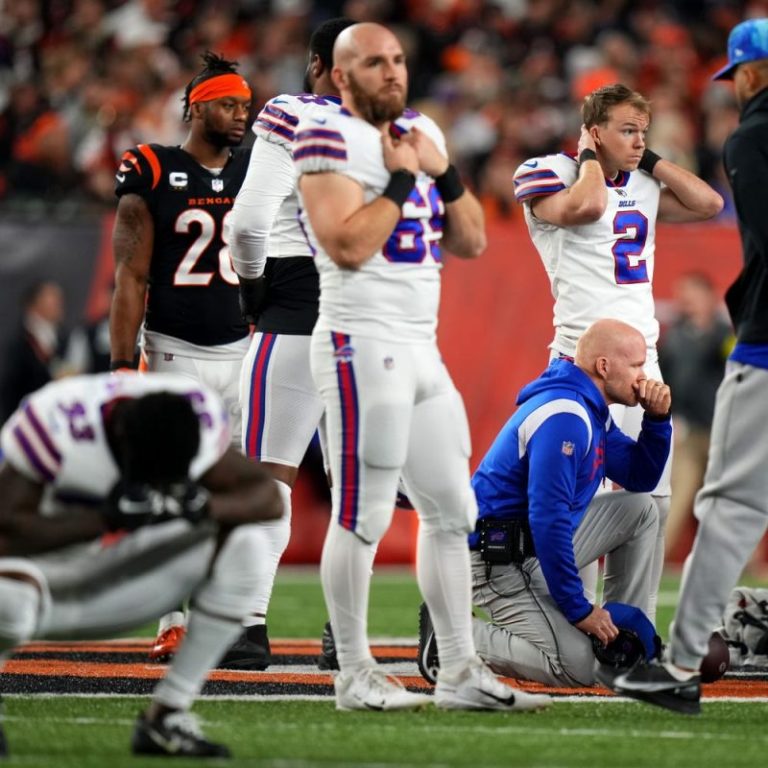The medical professionals and first responders who revived Buffalo Bills safety Damar Hamlin are the heroes. The doctors and staff at the University of Cincinnati Medical Center are the heroes.
Journalists are not heroes. But on a night like Monday when Hamlin collapsed with 5:58 left in the first quarter against the Cincinnati Bengals – he is currently in critical condition and sedated after suffering cardiac arrest, the Bills said – ESPN had the vital role of being the primary source for updates as it broadcast the game.
The network’s reporters and broadcasters delivered in an unprecedented situation.
Almost immediately, the network gave viewers an idea of the gravity of what transpired by showing the traumatized faces of Bills and Bengals players. The zoomed-out view provided some level of privacy during an unfolding public tragedy. ESPN made the right call in not replaying Hamlin’s hit and subsequent collapse multiple times.
Sideline reporter Lisa Salters shined from this point forward. She offered key updates that medical personnel was ‘working on’ Hamlin. This was no ordinary injury, she made clear. Play-by-play announcer Joe Buck said CPR was being administered. In the moment, the information was shocking and revelatory.
During the 65 minutes between Hamlin’s collapse and the NFL’s postponement, ESPN cut between its studio show – Suzy Kolber (host), Booger McFarland (analyst) and Adam Schefter (insider) – and the game broadcast of Buck, Troy Aikman and Salters. Buck himself often relayed key information, including the controversial statement that teams had five minutes to warm up before the game would continue. That sparked social media backlash, but the league said later in a conference call it did not know where that timeframe came from.
The lack of available updates made the coverage feel stagnant at points, but ESPN could not simply throw on a ’30 for 30′ and tell everyone to check back later. They could have brought in more voices during the studio segment.
McFarland was immediately adamant that the NFL should not move forward with the game and was able to offer insight into the emotions the players must have been experiencing. Salters again distinguished herself, this time with updates from the tunnels of Paycor Stadium about meetings between the Bills and Bengals and how the NFL would proceed.
Once the game was suspended, ESPN went to late-night ‘SportsCenter’ host Scott Van Pelt. Perhaps the greatest gift of ‘SVP’ is that he is a host who gets it. His tone never wavered and captured the moment. His shepherding kept the spotlight on Hamlin’s health and siphoned in reaction across the league and sports world.
Joining Van Pelt was analyst Ryan Clark, who offered his own personal experience of sickle cell anemia that almost caused him to lose his life in 2007. Clark emphasized Hamlin the person – a 24-year-old living the dream, which became a ‘nightmare,’ Clark said. It was succinct and powerful commentary.
The doctors and emergency medical personnel should be celebrated for their efforts thus far to keep Damar Hamlin alive. What ESPN had to do pales in comparison. But it should not go unnoticed.
Follow Chris Bumbaca on Twitter @BOOMbaca.

